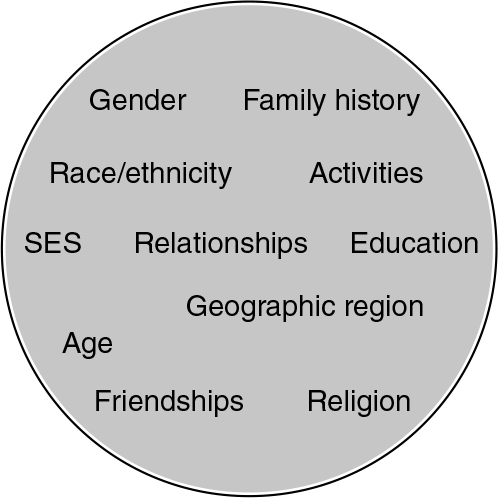Cultural Background Pies Activity
This is an excerpt from Cultural Equity in Physical Education by Tara B Blackshear,Brian Culp.
Purpose: The purpose of this activity is for you to consider different aspects of culture that have influenced who you are today and reflect on the importance of these in your life. This activity also provides an opportunity to think about how important these aspects of culture may be to the youth you encounter and what commonalities and differences you may have.
Directions:
Here are a few areas/questions for thought:
- Reflect on who you are today.
- What aspects of your background make you who you are today?
- What influences have contributed to your belief system?
- Why do you think certain people or things are important to you?
- What do you think might change in the future regarding the above?
Look at the circle below. It could be considered a full “pie” composed of characteristics that represent unique pieces of our cultural identity. Some of these characteristics may be very important to us. These characteristics could be meaningful to others, too, but perhaps not in the same way they are to us.

The examples of how slices are made in these next pies illustrate how two people who appear to be very similar in their identities can be very different in terms of what they feel is most important in their personalities. Will these two students have the same views about the world? Will their beliefs about education be the same? Or will their perspectives be different? It’s hard to know, but it is necessary to consider that individuals bring their own perceptions to the learning environment.

Think about your own characteristics. Using a piece of paper, draw your own cultural background pie with slices to illustrate what cultural characteristics have shaped who you are now. Compare with others and discuss events, actions, and observations that helped you arrive at your point of view.
More Excerpts From Cultural Equity in Physical EducationSHOP

Get the latest insights with regular newsletters, plus periodic product information and special insider offers.
JOIN NOW


